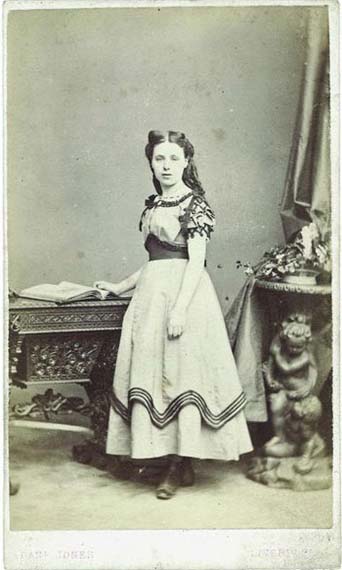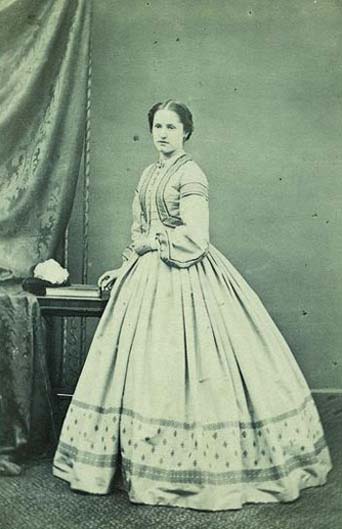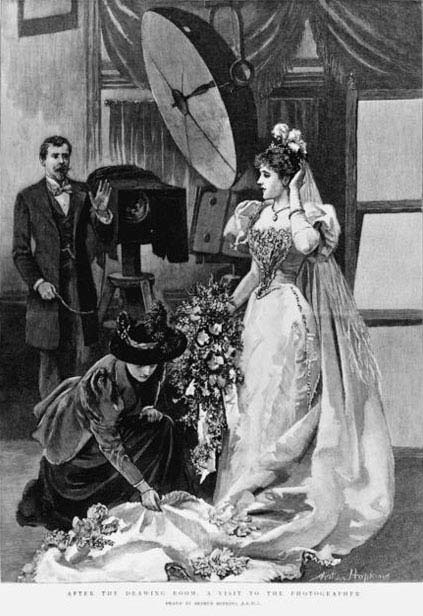5.6 Rites of passage (continued)
5.6.1 Young adults
Activity 20
Look closely at Images 54 and 55. Can you identify the two features which distinguished a girl from a young woman in the Victorian and Edwardian period?
Answer
To mark the important transition from childhood to adulthood, young women put their hair up and let their skirts down. Dress can sometimes assist in guessing the age of young females. One influential authority felt that a girl of 13 or 14 could look much older in her portrait if it was not taken to show that she is still a young girl. He advised fellow photographers to make a point of featuring the short frock which showed a girl's ankles.
The daughters of the wealthy were presented at Court. These Drawing Room Presentations were governed by strict regulations. After the nobility and squirearchy only certain professions were admitted – the daughters of the clergy, of naval and military officers, of physicians and barristers. This important occasion required special dress, entailed considerable expenditure and was usually celebrated by a photograph at one of the elite London studios. Presentation dress had to display a number of obligatory features: low décolletage, short sleeves; a full train fastened at the waist and an ostrich-feather head-dress.



